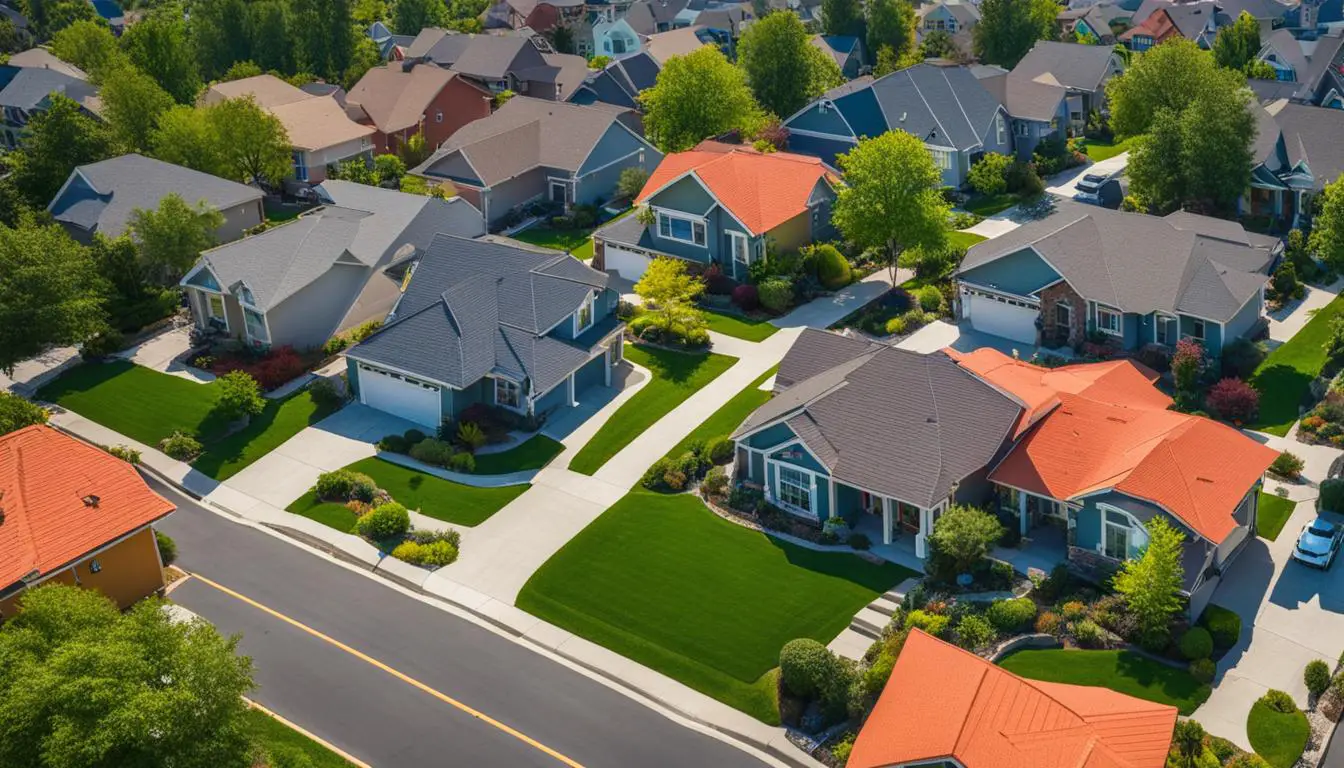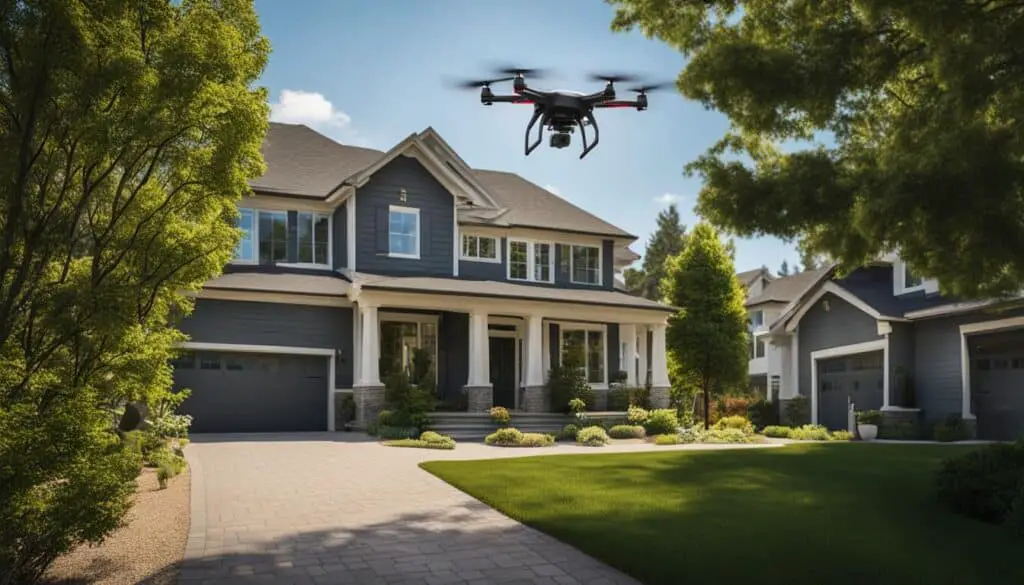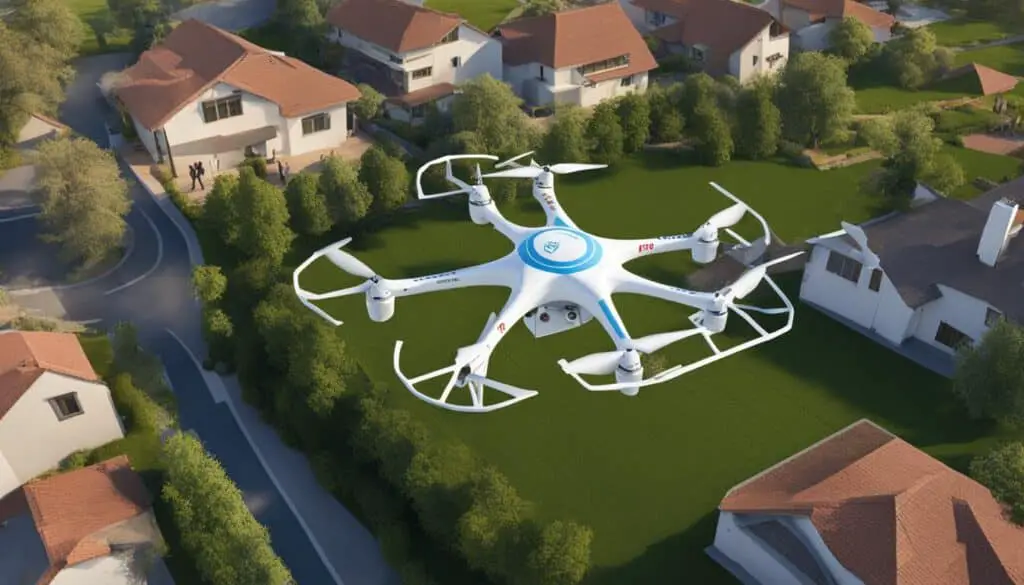
The Sky’s the Limit: Advancements in Drone Delivery Systems
Welcome to my article on the exciting world of drone delivery systems! In recent years, there have been incredible advancements in this field, revolutionizing the way we think about logistics and e-commerce efficiency. With drones becoming increasingly sophisticated and capable, the future of shipping is set to reach new heights.
Drone delivery systems have the potential to transform the way goods are transported, offering faster and more efficient delivery options. From small packages to medical supplies, these unmanned aerial vehicles can navigate through urban landscapes and reach remote areas with ease, making them a game-changer in the world of logistics.
Not only do drone delivery systems offer convenience and speed, but they also have the potential to reduce costs and improve sustainability. By minimizing the need for traditional vehicles and optimizing delivery routes, drones can help decrease traffic congestion and lower carbon emissions, aligning with our collective efforts towards a greener future.
In this article, I will explore the latest advancements in drone delivery systems, the role of private companies in driving innovation, the challenges and potential delays in their development, and the impact they can have on healthcare and humanitarian aid. I will also discuss the environmental benefits that come with embracing this technology.
Key Takeaways:
- Advancements in drone delivery systems have the potential to revolutionize the future of shipping and logistics.
- Private companies, such as SpaceX, play a critical role in the development of drone delivery systems.
- Challenges and potential delays exist in the implementation of these systems, but progress is being made.
- Drone delivery systems can have a significant impact on healthcare and humanitarian aid, improving efficiency and accessibility.
- By reducing carbon emissions and promoting sustainability, drone delivery systems offer environmental benefits.
As we delve into the world of drone delivery systems, let’s explore how these advancements are reshaping the way we think about shipping, logistics, and e-commerce as a whole.
The Role of Private Companies in Drone Delivery Systems
NASA’s ambitious Artemis program, aiming to send astronauts back to the moon, heavily relies on the expertise and resources of private companies. One prominent player leading the charge is SpaceX, founded by Elon Musk. SpaceX’s innovative Starship mega rocket is a vital component for the successful landing of astronauts on the lunar surface. By partnering with private companies like SpaceX, NASA can leverage their unique capabilities and accelerate the development of drone delivery systems.
“Private companies like SpaceX are pushing the boundaries of space exploration and technology, making significant contributions to the future of logistics and e-commerce,” remarks Dr. Jane Carter, a space industry expert.
However, the development of drone delivery systems has not been without challenges. Technical complexities and rocket launch failures have led to unforeseen delays in the implementation and testing of these systems. Despite setbacks, private companies continue to play a critical role in advancing the capabilities of drone delivery systems.
Private companies, with their agility and entrepreneurial spirit, bring fresh perspectives and innovative solutions to the table. Their investments in research and development drive technological advancements that can revolutionize the logistics and e-commerce industries. By collaborating with government agencies like NASA, these companies can bring their expertise and resources together to create a future where efficient drone delivery systems are a reality.
Private companies are not only driving advancements in drone technology but also shaping the future of logistics and e-commerce. By enabling faster and more reliable deliveries, these systems have the potential to redefine supply chains, enhance customer experiences, and unlock new opportunities for businesses in the digital age.
The partnership between NASA and private companies such as SpaceX showcases the collaborative efforts required to propel the expansion of drone delivery systems. Through cooperation and shared expertise, these forward-thinking organizations are paving the way for a future where logistics and e-commerce are seamlessly integrated with cutting-edge technology.
Challenges and Potential Delays in Drone Delivery Systems
The development of drone delivery systems poses various challenges and potential delays that need to be addressed. These issues, ranging from technical obstacles to safety concerns, can impact the timeline for implementing efficient logistics and e-commerce solutions.
“The delay in NASA’s Artemis program highlights the challenges and potential delays in the development of drone delivery systems.”
Technical Challenges
One of the primary challenges in drone delivery systems is overcoming technical hurdles. This includes developing robust and reliable drones capable of carrying various payloads, managing battery life for extended flights, and establishing effective control and communication systems.
Safety Concerns
Ensuring the safety of both the drone operators and the general public is crucial. Regulations must be established and followed to address airspace management, collision avoidance, and data privacy concerns. Additionally, addressing the potential risks associated with unforeseen weather conditions and unexpected incidents is essential for the widespread adoption of drone delivery systems.
First-Time Developments, Operations, and Integration
The implementation of drone delivery systems involves numerous first-time developments, operations, and integration processes. This includes establishing operational guidelines, training drone pilots, integrating with existing logistics infrastructure, and coordinating with regulatory bodies. The complexity of these tasks can lead to potential delays and challenges that need to be carefully navigated.
Despite these obstacles, progress is being made in the development of drone delivery systems. Private companies, government organizations, and researchers are actively working towards overcoming these challenges and refining the technology to ensure safe, efficient, and reliable delivery solutions.

To provide a clearer overview of the challenges and potential delays in drone delivery systems, here is a concise table:
| Challenges | Potential Delays |
|---|---|
| Technical hurdles | Extended testing and refinement |
| Safety concerns | Regulatory compliance and risk mitigation |
| First-time developments, operations, and integration | Establishment of operational guidelines and coordination |
Impact on Healthcare and Humanitarian Aid
Drone delivery systems have the potential to revolutionize healthcare and humanitarian aid. The use of drones in delivering medical supplies, vaccines, and emergency aid can greatly improve the efficiency and accessibility of critical resources, particularly in remote or inaccessible areas. By reducing delivery times and increasing accessibility, lives can be saved and healthcare and disaster response efforts can be significantly enhanced.
The advancements in drone technology have paved the way for faster and more reliable delivery of healthcare essentials. Medical supplies and vaccines can be transported swiftly to areas with limited infrastructure or where traditional transportation methods are challenging. This rapid response capability can play a crucial role in emergency situations and outbreaks, allowing for timely intervention and containment.
Furthermore, the use of drone delivery systems ensures that critical resources reach their destination without delays caused by traffic congestion or difficult terrains. In emergencies and disaster-stricken areas, where every second counts, drones can provide a lifeline by swiftly delivering life-saving supplies and aid.
Drone delivery systems have the potential to save countless lives by bridging the gap between healthcare and humanitarian aid in inaccessible regions, ultimately improving the overall efficiency and effectiveness of relief efforts.
Advantages of Drone Delivery in Healthcare and Humanitarian Aid:
- Efficiency: Drones can quickly transport medical supplies, vaccines, and emergency aid to remote and hard-to-reach areas, reducing delivery time and ensuring timely intervention.
- Accessibility: In regions with limited infrastructure or transportation options, drones can overcome geographical barriers, providing access to critical resources.
- Precision: With advanced navigation technology, drones can deliver supplies directly to specific locations, even in challenging terrain or disaster-stricken areas.
- Cost-effectiveness: Drone delivery systems can potentially lower transportation costs, making healthcare and humanitarian efforts more sustainable in the long run.
- Reliability: Drones can operate in adverse weather conditions, ensuring the continuous delivery of supplies, regardless of external factors.
With the integration of drone delivery systems in healthcare and humanitarian aid, resources can be allocated more efficiently, response times can be significantly reduced, and lives can be saved. The accessibility and reliability of these systems make them a valuable tool in improving healthcare outcomes and enhancing disaster response efforts.

Environmental Benefits of Drone Delivery Systems
Drone delivery systems bring significant environmental benefits by reducing carbon emissions and promoting sustainability. By harnessing the power of drones, traditional delivery methods that heavily rely on vehicles and fuel consumption can be minimized, leading to a smaller carbon footprint in logistics and e-commerce.
The optimization of delivery routes and the reduction of transportation time that drone systems enable have a direct impact on lowering greenhouse gas emissions. With drones, packages can be delivered more efficiently, bypassing traffic congestion and reducing the distance traveled. This streamlined process reduces the overall carbon footprint associated with delivery operations.
In addition to reducing carbon emissions, the adoption of drone delivery systems aligns with global efforts to promote sustainable practices. As the world continues to prioritize environmental sustainability, the integration of drones in logistics and e-commerce provides a forward-thinking solution that can reshape the industry.
Drone delivery systems offer a more sustainable and eco-friendly alternative to traditional delivery methods. By harnessing the power of technology, we can make significant strides in reducing our carbon footprint while still ensuring fast and efficient delivery of goods.
Embracing drone delivery systems not only enhances efficiency but also supports sustainability, ultimately contributing to a cleaner and greener future.
Example Table: Environmental Impact Comparison
| Delivery Method | Carbon Emissions | Sustainability |
|---|---|---|
| Traditional vehicles | High | Less sustainable |
| Drone delivery systems | Low | Highly sustainable |
The table above provides a comparison between traditional delivery methods, which rely on vehicles, and drone delivery systems. It clearly demonstrates the lower carbon emissions and higher sustainability associated with using drones for deliveries.
“Drone delivery systems offer an innovative solution to reduce carbon emissions and promote sustainability in logistics and e-commerce.”
In conclusion, the environmental benefits of drone delivery systems cannot be understated. By reducing carbon emissions and promoting sustainability, these systems are paving the way for a more eco-friendly future in logistics and e-commerce.
Conclusion
The advancements in drone delivery systems have the potential to revolutionize the future of shipping, logistics, and e-commerce. Private companies like SpaceX and organizations like NASA are making significant progress in developing and implementing drone delivery systems, despite the challenges they face along the way.
These advancements not only enhance efficiency and accessibility but also contribute to environmental sustainability. By reducing the reliance on traditional delivery methods that produce carbon emissions, drone delivery systems can help reduce the carbon footprint associated with logistics and e-commerce.
With continued innovation and investment, the future of drone delivery systems holds immense possibilities. We can expect faster and more efficient delivery of goods, improved access to remote areas, and heightened response capabilities in healthcare and humanitarian aid. The sky’s the limit for the future of shipping, as drones take to the air to reshape the landscape of logistics and e-commerce.
FAQ
What are the advancements in drone delivery systems?
Advancements in drone delivery systems include faster and more efficient delivery of goods, optimized delivery routes, and reduced carbon emissions.
How can drone delivery systems revolutionize healthcare and humanitarian aid?
Drone delivery systems have the potential to deliver medical supplies, vaccines, and emergency aid to remote or inaccessible areas faster and more efficiently, thereby saving lives and improving healthcare and disaster response efforts.
What are the environmental benefits of drone delivery systems?
Drone delivery systems reduce carbon emissions by minimizing the reliance on traditional delivery methods that involve vehicles and fuel consumption. They also promote sustainability by optimizing delivery routes and reducing transportation time.
What is the role of private companies in drone delivery systems?
Private companies like SpaceX are playing a crucial role in the development and implementation of drone delivery systems. They contribute to the advancement of logistics and e-commerce by providing innovative technologies and solutions.
What are the challenges and potential delays in drone delivery systems?
Challenges in drone delivery systems include technical issues, safety concerns, and the need for first-time developments, operations, and integration. These factors may result in potential delays in the development and implementation of efficient drone delivery systems.
Source Links
- https://www.dailymail.co.uk/sciencetech/article-12946447/One-giant-step-BACKWARDS-NASA-delays-eagerly-anticipated-return-moon-safety-concerns-crew-not-landing-lunar-surface-2026.html
- https://www.chicagotribune.com/nation-world/israel-hezbollah-commander-gaza-20240108-4jpalsez65a25j4vcydntsj5fy-story.html
